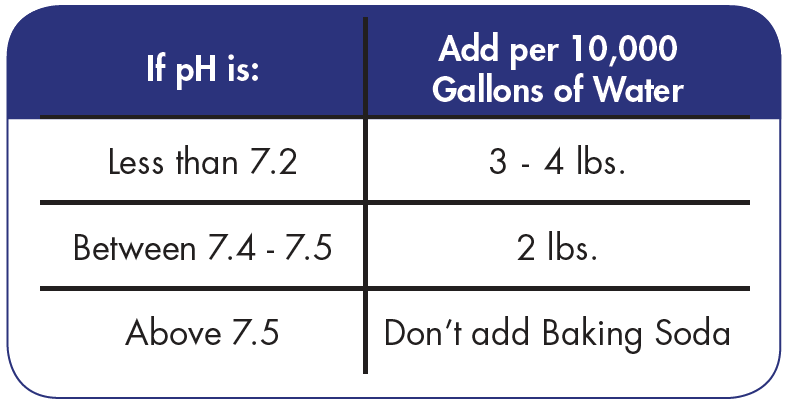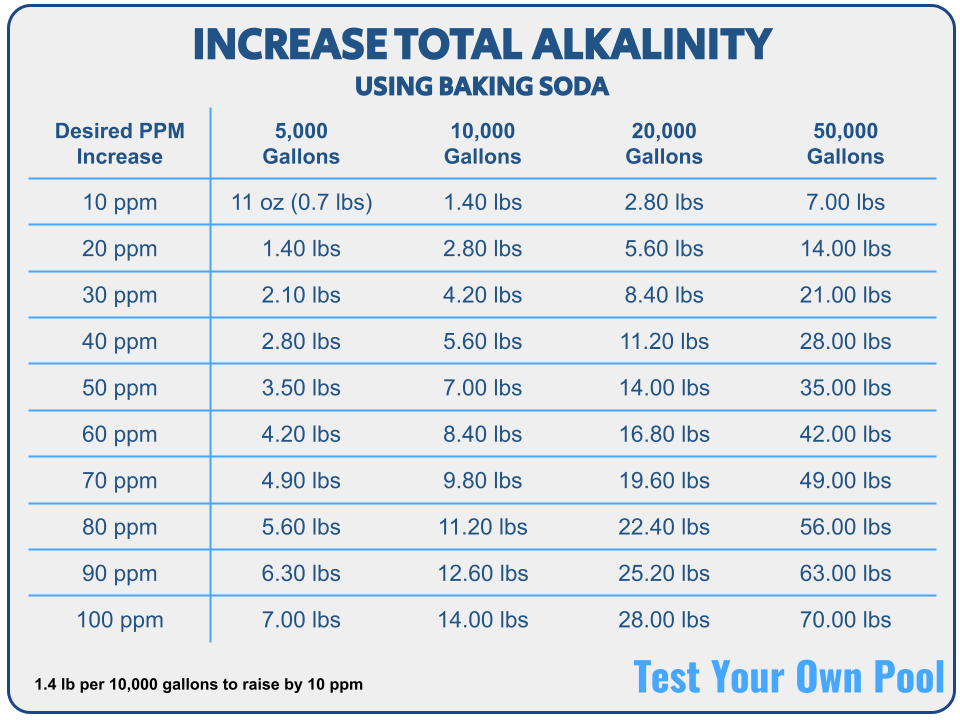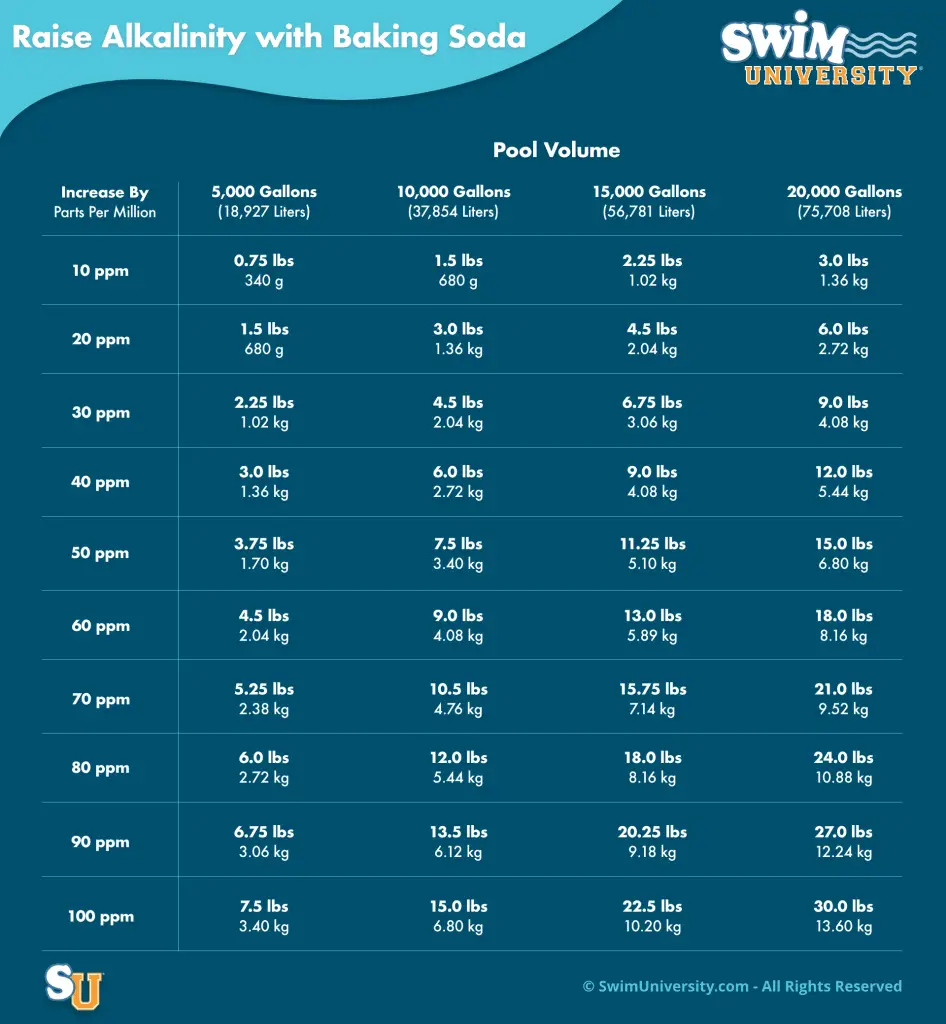To raise the pH in the pool, use 1.5 pounds of baking soda per 10,000 gallons of water. Maintaining the proper pH level in your pool is crucial to ensure the water is safe and comfortable for swimmers.
If the pH level is too low, the water becomes acidic and can irritate the skin, eyes, and even corrode the pool equipment. Baking soda is a popular and effective way to raise the pH in the pool. However, it’s important to use the correct amount to avoid overcorrecting or undercorrecting the pH level.
We will discuss the appropriate amount of baking soda to use and the steps to raise the pH level in your pool effectively.
Factors Affecting Pool Ph
When it comes to maintaining the pH level in your pool, it’s crucial to be aware of the various factors that can affect it. These can include sunlight exposure, rainfall and evaporation, and the amount of baking soda you use. Here’s a closer look at how these elements can impact your pool’s pH levels.
Sunlight Exposure
Sunlight exposure can significantly impact the pH level of your pool water. The UV rays from direct sunlight can cause the breakdown of chlorine, resulting in a decrease in pH levels. In a sunny climate, you may need to adjust the amount of baking soda you use more frequently to counteract this effect.
Rainfall And Evaporation
Rainfall and evaporation can also have a substantial impact on the pH levels in your pool. When rainwater is introduced, it tends to be slightly acidic, which can lower the pH of your pool water. Additionally, evaporation can lead to a concentration of alkaline substances in the pool, potentially raising the pH levels. Regular monitoring and adjustments to the baking soda dosage are essential in areas prone to frequent rainfall or high evaporation rates.

Credit: www.youtube.com
Testing Pool Ph
Maintaining the right pH level is crucial for keeping your pool water safe and comfortable for swimming. Testing pool pH regularly is essential to ensure that the water is within the optimal pH range of 7.4 to 7.6. Here’s how to go about it.
Using Test Kits
Use a reliable pool water test kit to measure the pH level accurately. Test kits typically include pH test strips or liquid reagents and a color chart to compare the results. Follow the instructions provided with the test kit carefully to obtain an accurate reading.
Frequency Of Testing
For best results, test the pool pH at least twice a week, especially during the swimming season. Frequent use, heavy rain, and pool usage can affect the pH level, making it crucial to monitor and adjust as necessary. Regular testing helps to maintain a balanced pH level, ensuring the pool water remains clean and safe.
Role Of Baking Soda In Ph Boosting
Baking soda is a versatile and affordable option to raise the pH level in your pool.
Function Of Baking Soda
- Neutralizes acidity in pool water
- Stabilizes pH levels
- Prevents corrosion of pool equipment
How Much To Use
For small pools, use 1.5 pounds of baking soda per 10,000 gallons of water.
If you have a larger pool, you may need to use up to 5 pounds per 10,000 gallons to adjust pH effectively.
Calculating Baking Soda Quantity
When it comes to maintaining a balanced pH level in your swimming pool, baking soda can be a lifesaver. However, it’s essential to use the right amount of baking soda to raise the pH without overdoing it. By calculating the baking soda quantity based on the current pH level and pool size, you can ensure optimal water chemistry and enjoy a refreshing pool experience.
Current Ph Level
Before adding any baking soda to your pool, it’s crucial to know the current pH level. You can easily measure this using a testing kit or a digital pH meter. The pH scale ranges from 0 to 14, with 7 being neutral. Any value below 7 indicates acidic water, while values above 7 indicate alkaline water. To raise pH levels, you’ll need to add baking soda, which acts as a pH increaser.
Pool Size
The size of your pool plays a significant role in determining the amount of baking soda you’ll need. If you have a small above-ground pool, it requires less baking soda compared to a large in-ground pool. Pool size not only affects the quantity but also influences the rate at which the pH changes. In general, larger pools will require more baking soda to achieve the desired pH adjustment.
To calculate the baking soda quantity accurately, you can use the following formula:Pool Volume (in gallons) x Desired pH Increase x 1.25 = Amount of Baking Soda Needed (in pounds)
Let’s break down the formula into simple steps:- Step 1: Measure your pool’s volume in gallons. You can find this information in your pool’s documentation or use an online pool volume calculator.
- Step 2: Determine the desired pH increase. If your pool has a pH of 6 and you want to raise it to 7, the desired pH increase would be 1.
- Step 3: Multiply the pool volume by the desired pH increase.
- Step 4: Multiply the result by 1.25 to account for the necessary buffer capacity.
Applying Baking Soda
Techniques For Distribution
Baking soda can be evenly spread across the pool surface for proper Ph adjustment.
- Use a pool skimmer to distribute baking soda effectively
- Walk around the pool while scattering baking soda for uniform coverage
Mixing With Water
Combining baking soda with water helps distribute it evenly for optimal Ph balance
- Fill a bucket with water and gradually add baking soda while stirring
- Stir the mixture until the baking soda is completely dissolved

Credit: www.armandhammer.com
Monitoring Ph Levels
Raise the pH level in your pool by adding baking soda. Use the right amount of baking soda to maintain the ideal pH balance for a clean and safe swimming environment. Monitor the levels regularly to ensure optimal conditions.
Monitoring pH levels in your pool is essential to ensure the water is safe and comfortable for swimmers. Observing Changes Regularly checking the pH levels will help you maintain the right balance of acidity and alkalinity in the water. This is crucial for your pool’s overall health and the effectiveness of the chlorine. Re-testing pH It’s important to re-test the pH after any adjustments have been made to ensure that it has reached the desired levels. This will help you identify if further adjustments are necessary. Using a reliable pH testing kit will allow you to accurately measure and adjust the pH levels.Alternative Ph Boosting Methods
When it comes to maintaining the pH balance of your pool, baking soda is a popular choice. However, there are alternative pH boosting methods that can also be effective. Let’s explore these methods in more detail to understand how they can be used to adjust the pH level in your pool.
Using Soda Ash
Soda ash, also known as sodium carbonate, is another effective pH adjuster for pools. It has a high pH, making it suitable for raising the pH level in the pool water. By adding soda ash to the pool, you can increase the pH level while also helping to stabilize the overall alkalinity. It’s important to follow the manufacturer’s instructions and use a pool testing kit to monitor the pH levels after adding soda ash to achieve the desired balance.
Vinegar As A Ph Adjuster
Vinegar, a common household item, can also be used as a pH adjuster for your pool. It contains acetic acid, which can help lower the pH level of the pool water. While it’s not typically used to raise pH, in some cases where the pH is excessively high, a small amount of vinegar can be added to lower it. However, it’s essential to use vinegar cautiously and test the water frequently to prevent overcorrection.

Credit: www.testyourownpool.com
Conclusion
To sum up, understanding the right amount of baking soda to raise the pH in your pool is crucial for maintaining water balance. By following the recommended guidelines and regular testing, you can ensure a clean and safe swimming environment.
Keep your pool pH in check for a refreshing and enjoyable experience.





